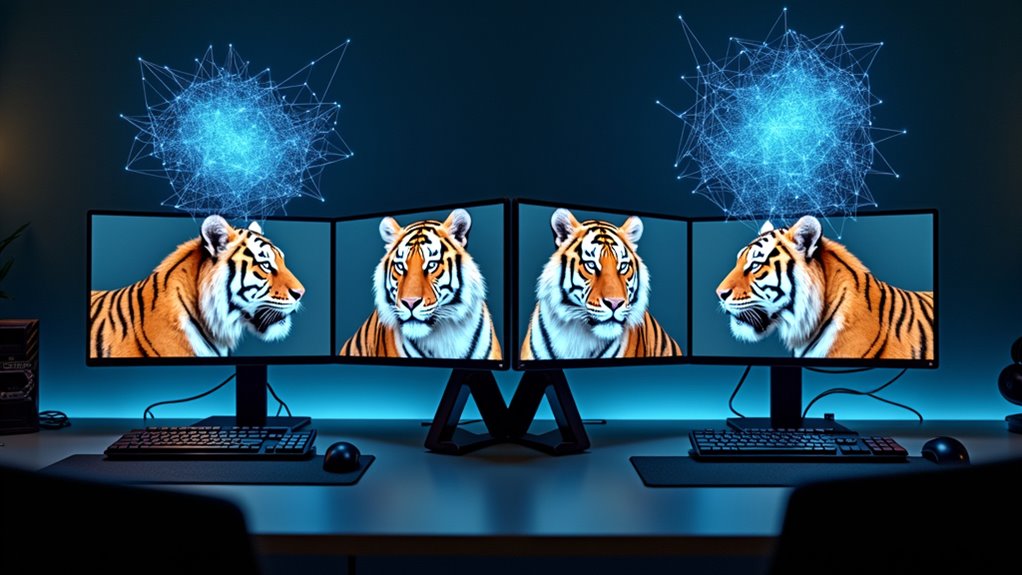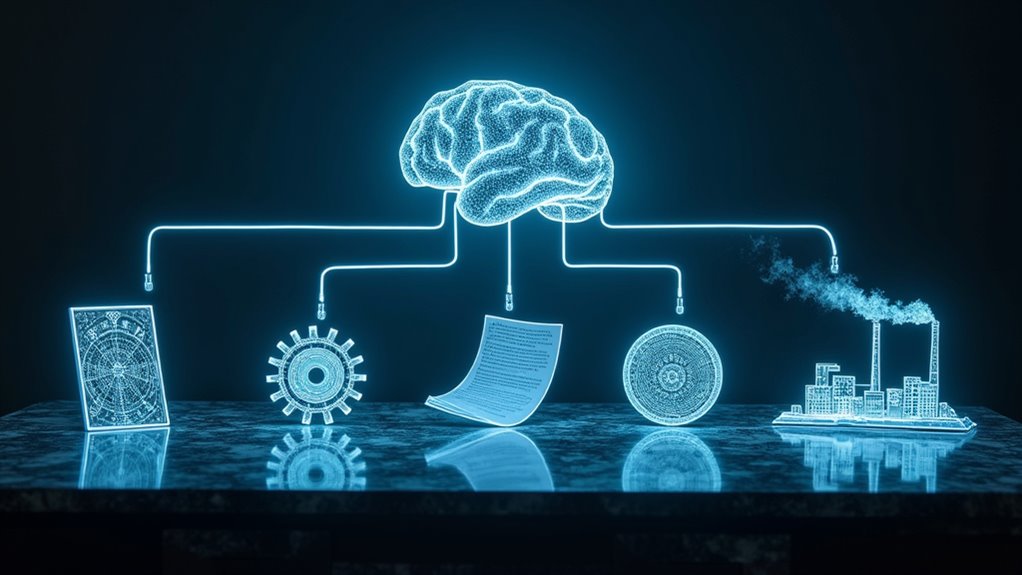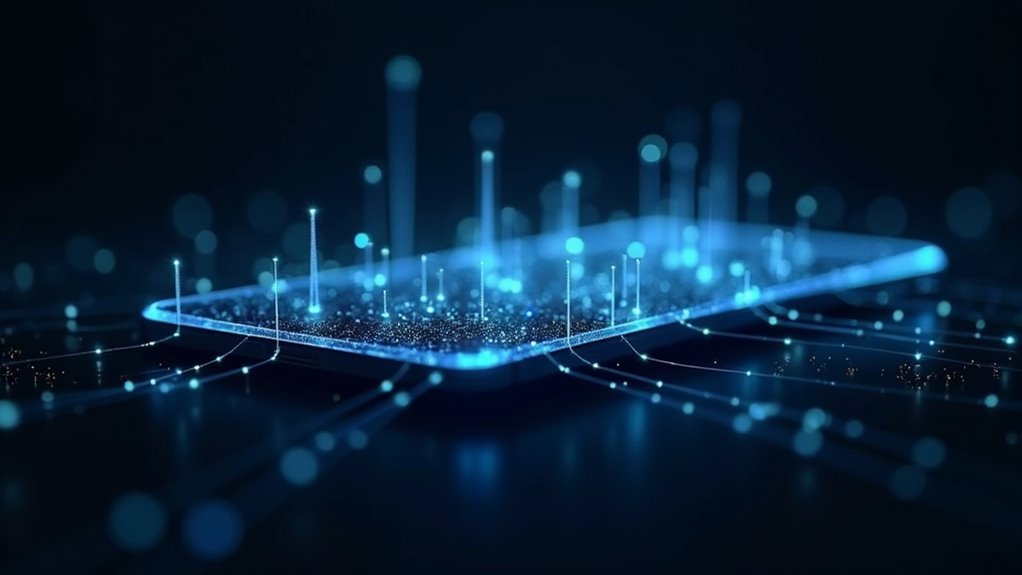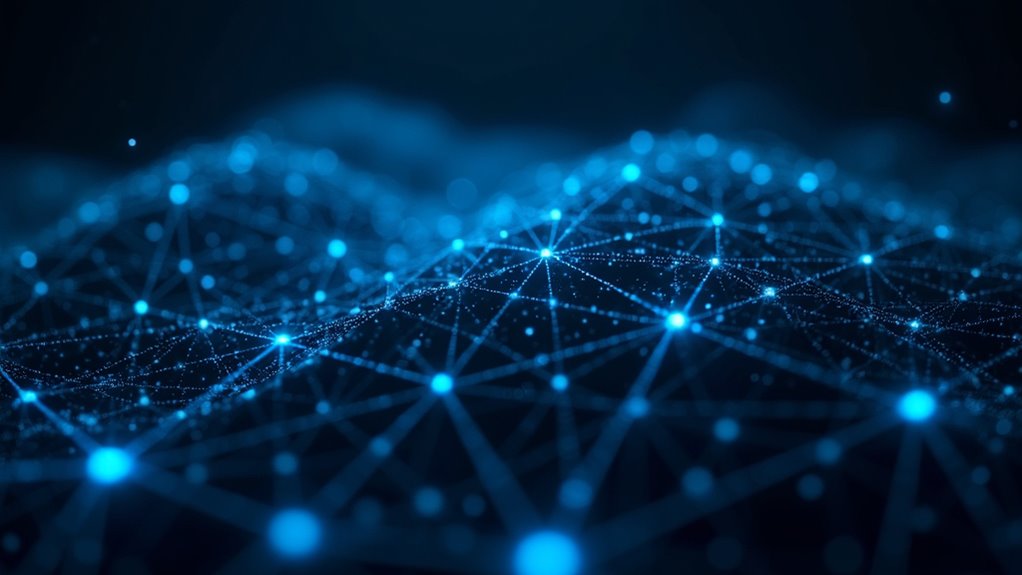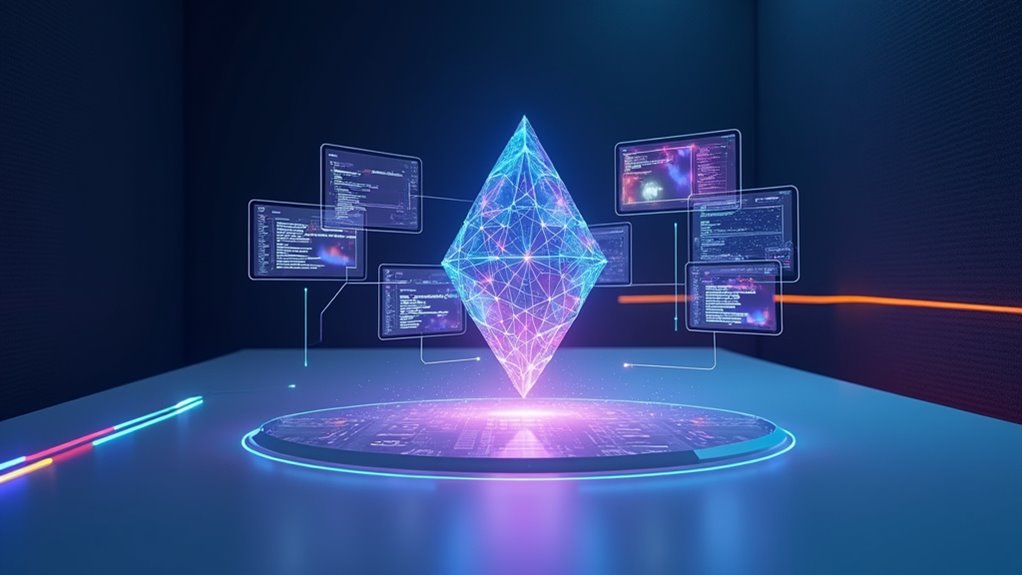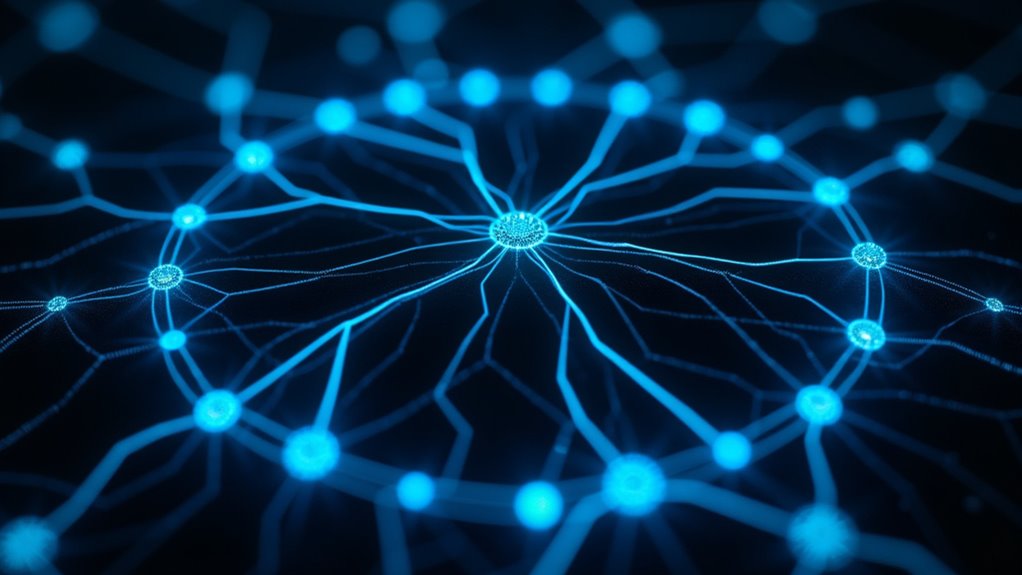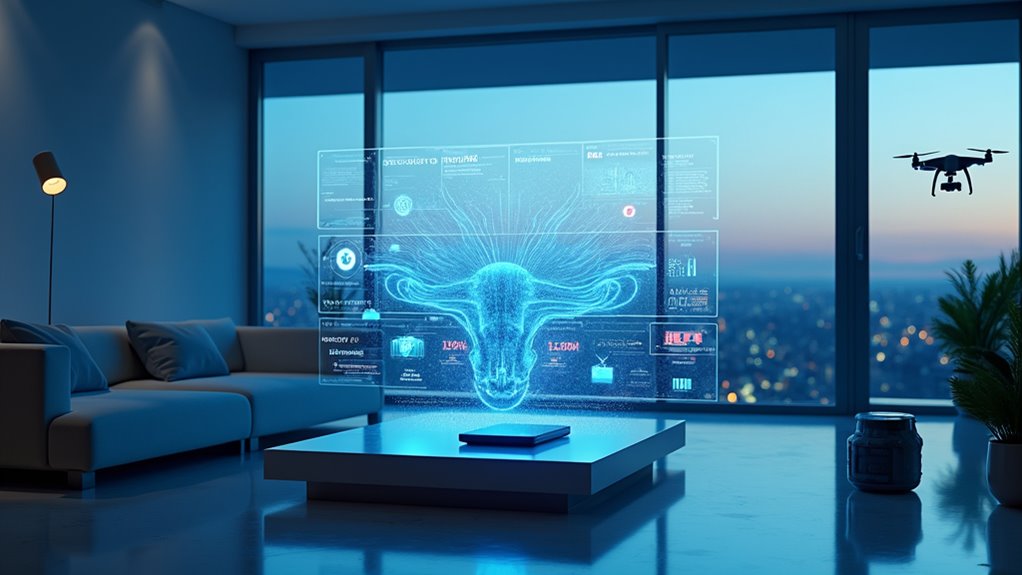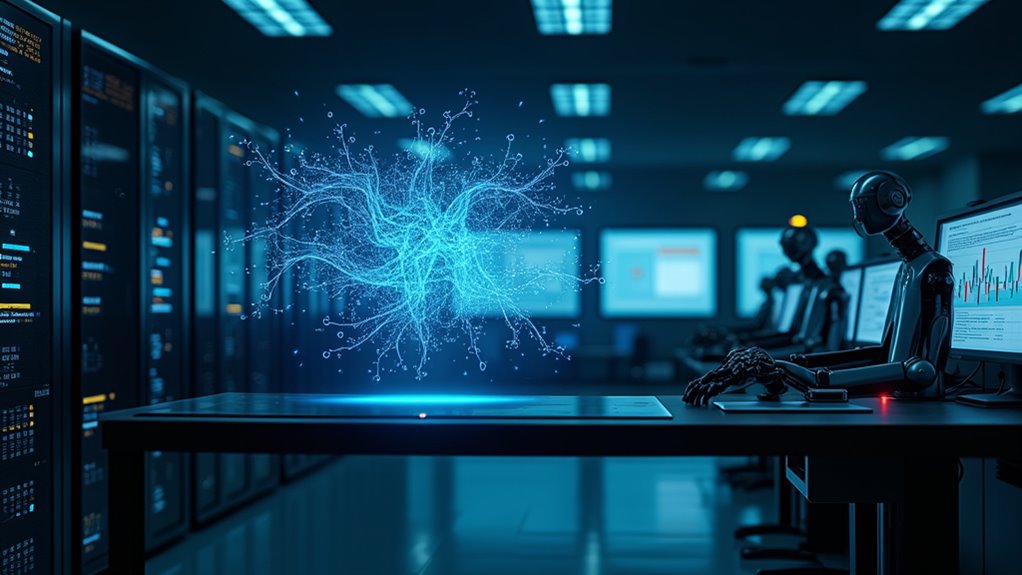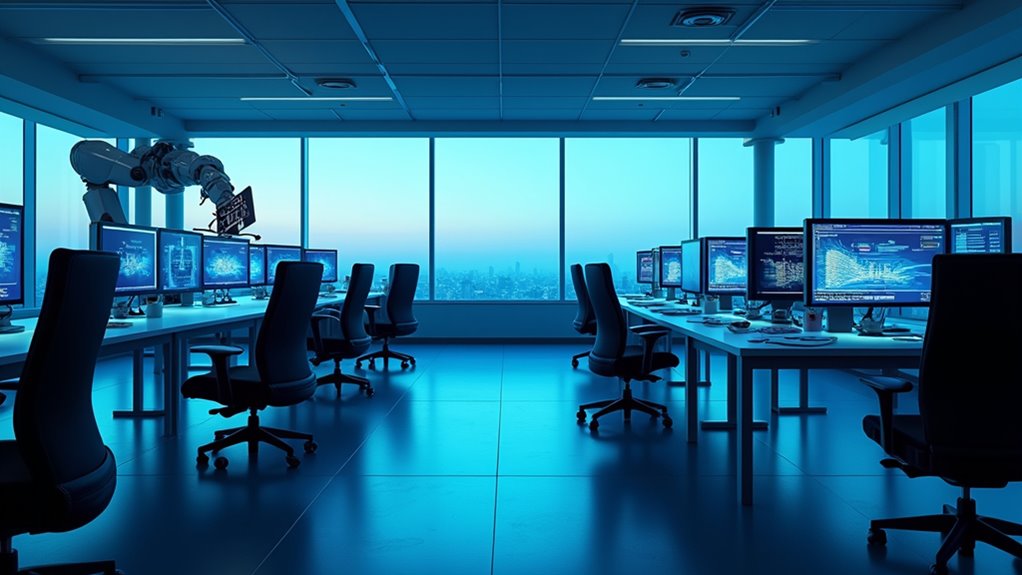Deepfakes rely on two competing AI systems – one creates fake content while the other tries to spot the fakes. The AI analyzes countless images and videos to learn a person’s unique features, expressions, and movements. Then it uses this data to generate or manipulate synthetic media that looks eerily real. Modern computers with decent GPUs can now create these convincing fakes without advanced expertise. The technology keeps getting better, making it harder to separate fact from digital fiction.
While artificial intelligence continues to revolutionize countless industries, its role in creating deepfakes has become both fascinating and terrifying. The technology behind these synthetic media creations isn’t just clever – it’s downright mind-bending. At its core, deepfakes rely on sophisticated deep learning algorithms and something called Generative Adversarial Networks (GANs), which is basically two AI systems duking it out to create increasingly convincing fake content.
The process starts simple enough: gather loads of images or videos of someone’s face. Then things get weird. The AI analyzes every tiny detail – facial expressions, movements, quirks – learning patterns that make each person unique. It’s like having a creepy digital stalker memorizing your every feature. Once the system has enough data, it can manipulate existing media or create entirely new content that looks disturbingly real. The number of harmful deepfake videos has been doubling every six months since 2018.
Here’s where it gets really interesting (or terrifying, depending on your perspective). Modern deepfake technology has become so accessible that anyone with a decent computer and GPU can potentially create one. No PhD required. The AI does most of the heavy lifting, using neural networks to process and transform images with an accuracy that would make old-school video editors weep with jealousy. The extensive post-processing phase ensures every detail from audio synchronization to lighting looks natural. The generator and discriminator networks work in an adversarial relationship, with the mode collapse problem being a significant challenge to overcome.
But it’s not all fun and games in the land of synthetic media. Deepfakes pose serious risks to society – from spreading misinformation to privacy violations. Think about it: your face could be starring in videos you never agreed to make. Yikes.
And while AI detection tools are constantly evolving to spot these fakes, it’s becoming increasingly difficult to tell what’s real from what’s artificially generated. The technology isn’t going anywhere, though. It’s already found legitimate uses in entertainment and education. Movie studios love it for special effects, and educators are exploring its potential for creating engaging content.
But let’s be real – as this technology becomes more sophisticated, we’re all going to need to get a lot better at questioning the media we consume. Because those perfect-looking videos? They might just be digital smoke and mirrors.
